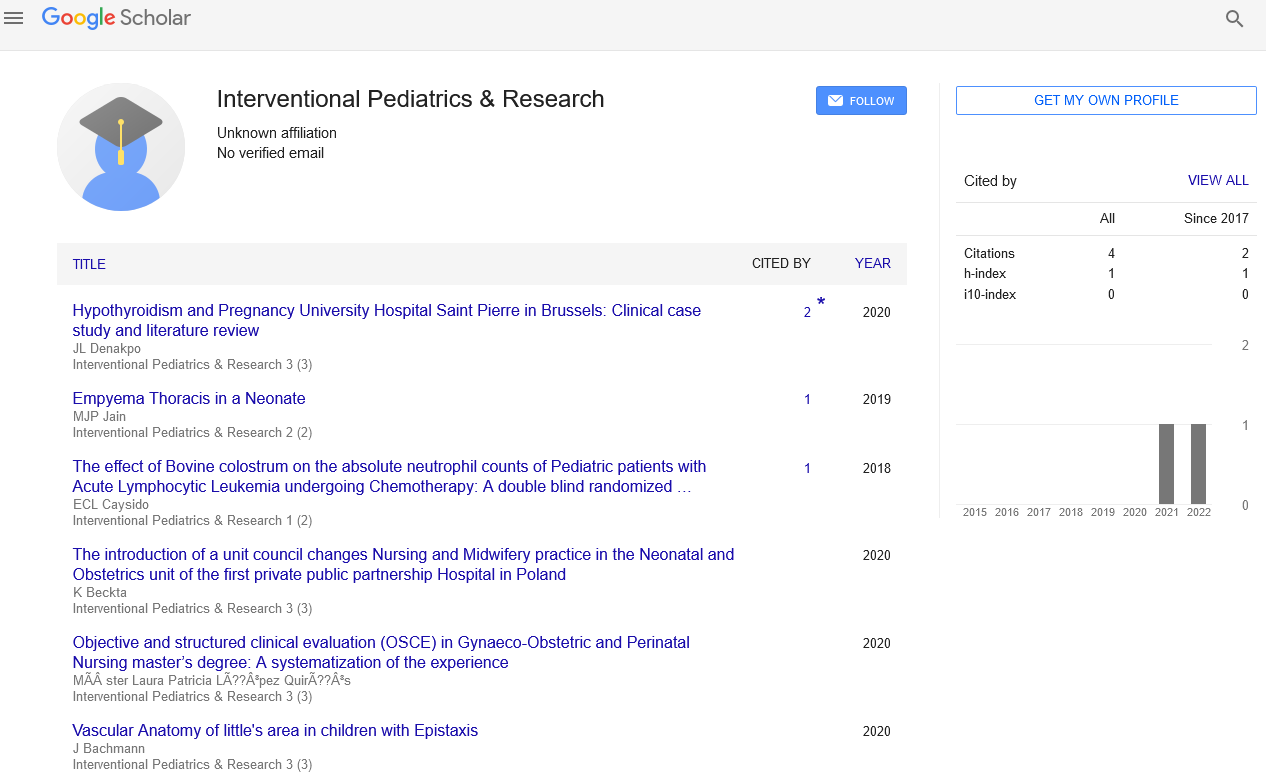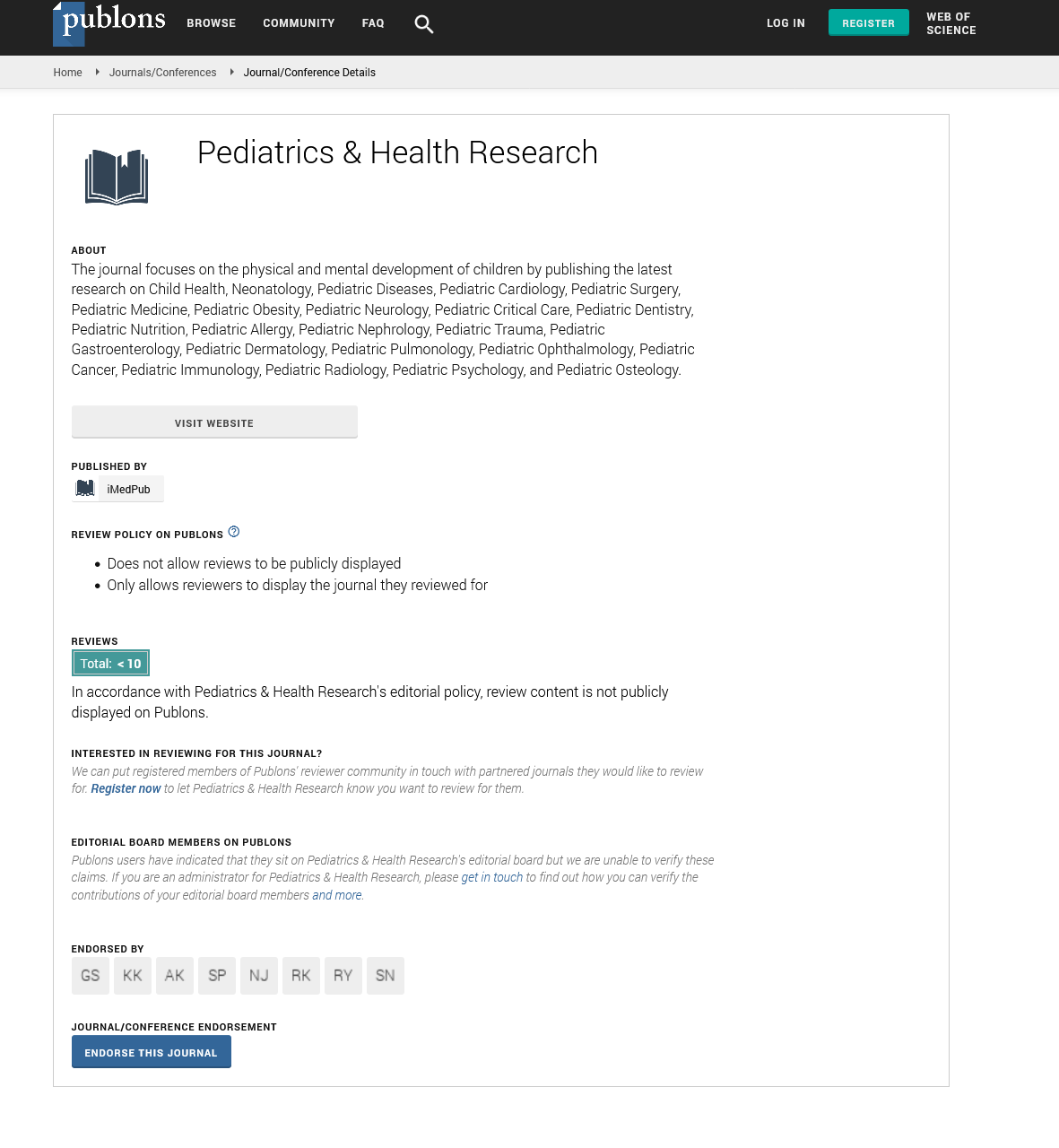Perspective - Interventional Pediatrics & Research (2022) Volume 5, Issue 3
A Short Note on Pediatric Nutritional Requirements: Determination with Neural Networks.
Bekir Karlik*
University of Qafqaz , Faculty of Engineering, Department of Computer Engineering,Neriman Nerimanov pr.103, Baku, Azerbaijan
Received: 02-Jun-2022,Manuscript No.ipdr-22-17750; Editor assigned: 06-Jun-2022, PreQC No.ipdr-22-17750 (PQ); Reviewed: 20-Jun-2022,QC No.ipdr-22-17750; Revised:23- Jun-2022, Manuscript No. ipdr-22- 17750 (R); Published: 30-Jun-2022, DOI: 10.37532/ipdr.2022.5(3).50-51
Abstract
The need for reliable and accurate determination of daily dietary requirements of children is widespread. Especially in hasty and crowding circumstances of pediatric clinics and outpatient clinics quick and easy calculation of daily caloric, protein andwater requirement is difficult. Use of an automated computer-based technique to assist determination of daily dietary requirements of energy. Then daily values of recommended dietary allowances energy as kcal/d, protein as g/d, water as mild have been taught to neural network in a personal computer. After computer training of network, nutritional requirements of same children were computed by artificial neural network, and results derived from both of calculations were compared statistically.
Keywords
protein • energy • milk.
Introduction
Childhood is a dynamic period of life that rapid growth and development take place. A data series of 312 children were obtained from pediatric outpatient clinics. The age, weights and weight percentiles of children were determined and recommended daily dietary requirements for energy; protein and water were calculated on the basis of children’s age, sex and weight from tables published by World Health Organization (WHO) and from other. literature (WHO Technical Report Series 1985 and Barness et at 1986) Then daily values of recommended dietary allowances energy as kcal/d, protein as g/d, water as mild have been taught to neural network in a personal computer [1].
After computer training of network, nutritional requirements of same children were computed by artificial neural network, and results derived from both of calculations were compared statistically. The transfer functions of the elements in these subsets are 0 the same. These little groups are called as layers. Networks are the combination of these layers in a hierarchy. ANN transfer function and local memory element are adjusted according to the relation between input and output signal by a training rule The multilayered feed forward networks has a better ability to learn the correspondence between input patterns and teaching values from many sample data by the error back propagation algorithm. Therefore, in this paper we used three-layered feed forward neural network and taught them by error back-propagation (Pao 1989 and Karlik 1994). The neural network’s software was written by the investigators and employed back-propagation in a supervised learning paradigm in which the generalized delta rule was used in adjusting the weight values [2].
The basic structure of ANN used in this study. Here the number of hidden nodes on the hidden layer must be the maximum of the number of input or output nodes. Otherwise training error will be high. So determination of nutritional requirements for normal children was also beneficial. The difference between two calculated methods of dietary assessment was not significant We can say that network’s assessments are similar that of calculated from WHO’s tables Therefore we can prefer calculation with network in dietary estimations due to accuracy and rapidity of computer program. So physicians and other health workers can save time and avoid calculation errors using network [3].
Description
Feeding with infant formula cow’s milk or any other food necessitates calculation of nutritional requirements Nutritionalvrequirements of a child can be calculated from dietary tables by physicians or dieticians Due of crowding circumstances of the pediatric clinics, dietary calculations by this classical method may be faulty and this method takes a lot of time. In order to avoid calculation errors and to spare time, we prepared a practical and speedy computer program on neural networks to compute daily energy, protein and water requirements of children not only for definite age or weight but also for every age and weights after neonatal period Although artificial Ilcural networks have been used extensively for problems in engineering in the last 10 vears [4].
Acknowledgement
None
Conflict of Interest
None
References
- Fung KS, Chan FH, Lam F et al. Visual evoked potential enhancement by an artificial neural network filter. Biomed Mater Eng. 6, I I J -I 13 (1996).
- Itchharporia D, Snow PB, AJmassy R et al. AI1ificial neural networks: current status in cardiovascular medicine. J Am Coli Cardiol 28, 515-521 (1996).
- Karlik B. The myoelectric control of multifunction prosthesis using artificial neural networks.13, 65-70 (1994).
- Pao YH. Adaptive pattern recognition and neural network. Addison-Wesley, Newyork, 130, 6543-6553 (1989).
Indexed at, Google Scholar, Crossref
Indexed at, Google Scholar, Crossref
Indexed at, Google Scholar, Crossref


